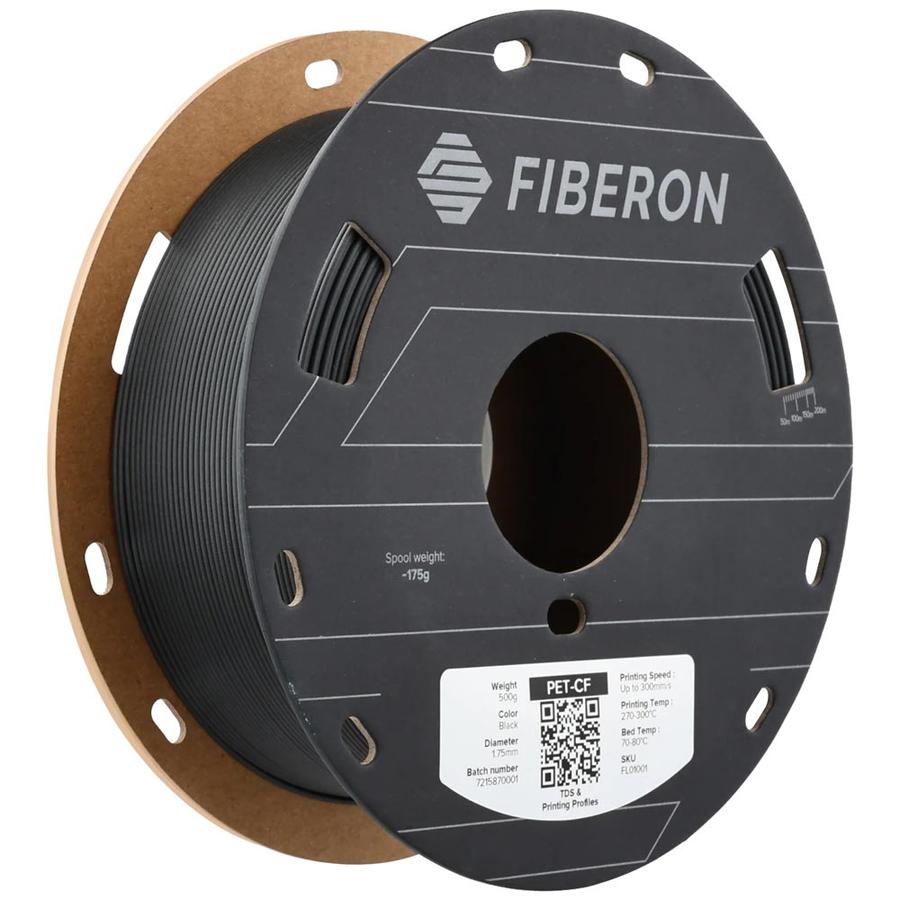Polymaker Fiberon™ PET-CF17 1.75 mm / 500g / Black
Carbon fiber reinforced PET featuring high modulus, heat resistance, moisture insensitivity, and ease of printing.
PET-CF17 / in 1.75mm / 500g, 3000g / black
- Manufacturer: Polymaker
- Manufacturer number: FL01001
- EAN: 6938936714590
- Item number: 37514
- Availability: Delivery time about 4 weeks

- excellent rigidity
- cost-effective
- creep resistance
Fiberon™ PET-CF17 is a carbon fiber reinforced PET (polyethylene terephthalate) filament.
It's the preferred choice for engineering 3D printing composite materials, featuring high modulus, heat resistance, moisture insensitivity, and ease of printing.
Download the TDS to learn more about the performance of the material.
Printing Requirements
- All-metal hotend 270˚C+
- Hardened nozzle
- Annealing post printing
- You may need a filament dryer depending on the humidity of your environment. Keep dry when not in use.
- Material
Fiberon™ PET-CF17 - Printing temp.
270 - 300 ˚C - Heatbed
70 - 80 ˚C - Chamber Temperature
Room Temperature - Surface
BuildTak, Magigoo - Filament diameter
1,75 mm - Filament net weight
500 g / 3000 g - Gross weight
900 g / 4000 g - Storage
cool and dry
What is annealing?
You can find out more about annealing HERE
Will the spools work in an AMS?
Yes! We have redesigned the edges of our spools so all Polymaker products will now spin great in the AMS.
That said - you will need to be careful when using any abrasive materials in the AMS.
What is the difference between PET and PETG?
PET and PETG differ in their chemical structure, properties, printability, and applications. PETG is more flexible, easier to print, and suitable for 3D printing and medical applications, while PET is more durable and suitable for applications requiring thermal resistance.
Do I need a filament dryer?
It is possible to print this without a filament dryer, but that can depend on the environment where you live. If you live in a humid climate - you may need a filament dryer either entire time while printing, or at least between prints. Keep stored dry.
- Manufacturer
- Polymaker B.V.
- Vondellaan 88, 3521GH Utrecht, Netherlands
- sales.eu@polymaker.com
- https://www.polymaker.com/
















